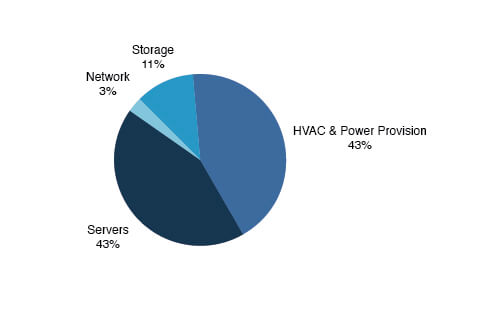.png?sfvrsn=9a9ece65_1)
What happens when you combine a fragile supply chain, a pandemic, and a wildly unexpected rapid economic rebound? The answer most often is short-term shortages. However, because the combination of events covered the entire world, the short term is lasting
longer and causing more challenges. The energy sector is still scrambling to recover more than 18 months after improvements in other sectors. This delay is causing more challenges affecting many facets of business, particularly data centers.
What's Causing this Global Energy Crisis?
Despite many predictions of a recovery period lasting years, the economy surprised everyone unleashing pent-up demand for everything. Virtually every sector of the economy attempted to respond, putting an immense strain on energy supplies. The stress of these factors affecting energy also contributed to skyrocketing prices for oil, gas, and other electric generation markets.
How These Factors Affect Data Centers
Demand for computing accelerated because the pandemic continued its growth, creating an energy crisis within an energy crisis. Data centers share two common traits:
- Many data centers cluster in geographic areas.
- Data centers significantly increase demand on the power grid.
Short-term alternatives include allowing data centers to use diesel generators when the power grid nears overload conditions. These alternatives exceed pollution guidelines, adding to air quality issues in those affected regions. Another option is to investigate using equipment that reduces energy consumption. A prime target for improvement is the HVAC systems installed in data centers.
Reducing HVAC Energy Cost
 |
Source: Energy Innovation Policy & Technology LLC |
Data centers consume 10 to 50 times the energy per floor space compared to a comparably sized office building. HVAC equipment in data centers accounts for an estimated 40% of the energy used. Efforts to reduce energy costs by arranging servers to form aisles to exhaust hot air and those to bring in cool air can provide some savings. Still, HVAC manufacturers must find ways to reduce energy through more efficient equipment. Fortunately, Greenheck has been working on reducing energy costs for years.
How can you turn down HVAC energy consumption in your data center projects?
Greenheck engineers have developed new products and refined existing ones to provide significant cost savings on products that include energy recovery ventilators (ERV), fan arrays, dedicated outdoor air systems (DOAS), tempered air products (TAP) to condition the air, and air handling units (AHU). These products, and those making up computer room air handler (CRAH) and computer room air conditioner (CRAC) systems, provide energy savings when combined with external solutions to the power grid, reducing the strain, and reducing the chances of future energy crises.


from